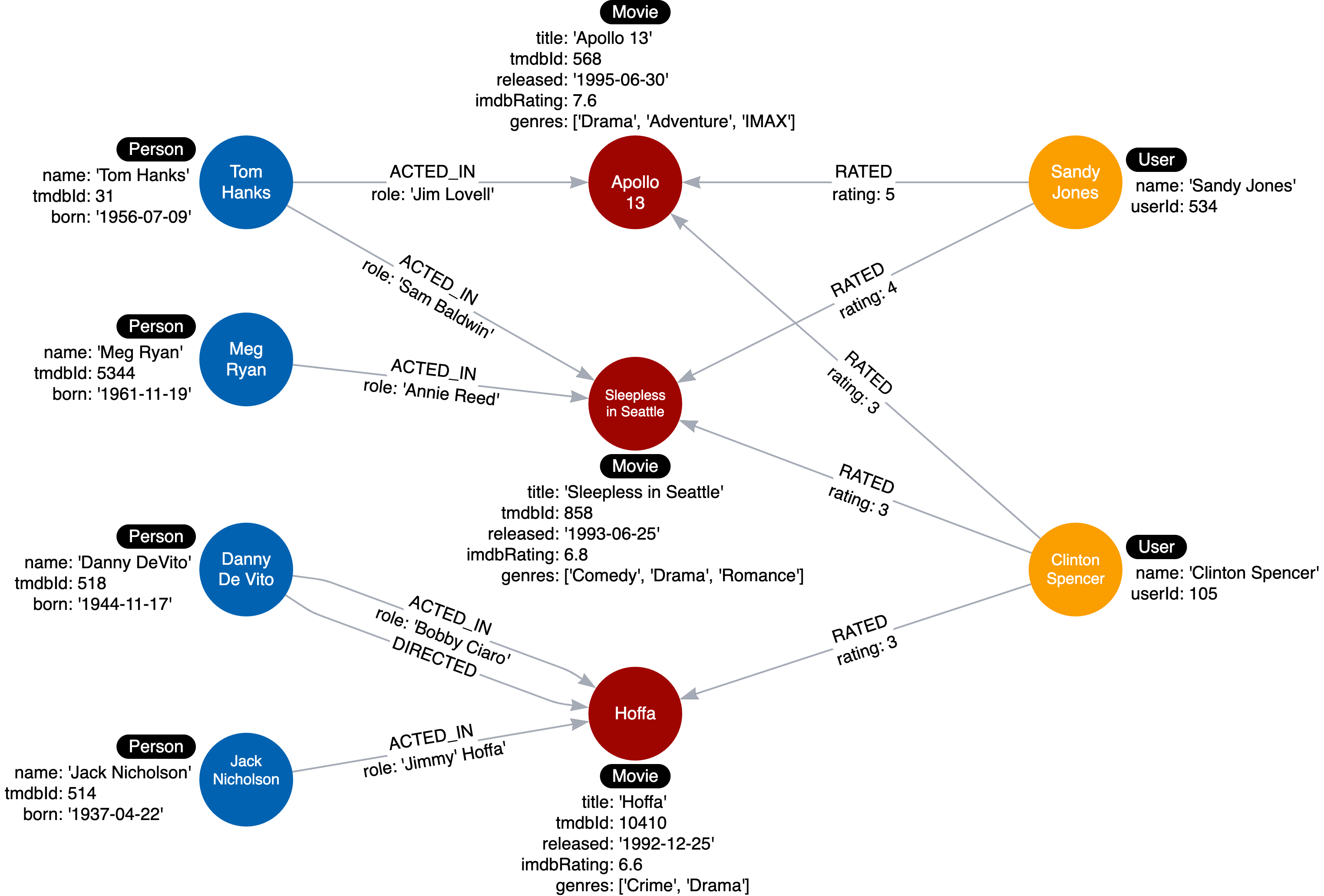Why test?
Thus far you have seen that you design the data model on paper, whiteboard, or with a tool like Arrows app. You use the use cases to design the data model that includes labels for nodes, relationship types and direction, and properties for the nodes and relationships.
You have also populated the graph to implement the data model with a small set of test data. To ensure that the graph can satisfy every use case, you must test the use cases against the graph.
Testing the data model
Here is the instance model that should now be in our graph:

In the next challenge you will test each use case against the graph by executing Cypher queries.
Your testing will be to execute Cypher code against the instance model to verify that graph and the query support the use case.
For example, with our first use case:
Use case #1: What people acted in a movie?
You will execute this query where you specify the title of the movie:
MATCH (p:Person)-[:ACTED_IN]-(m:Movie)
WHERE m.title = 'Sleepless in Seattle'
RETURN p.name AS ActorIn the description of the use cases, you may even specify what the expected result should be.
More testing?
As you go through the use cases, you may think of more data that you want to add to the graph to round out the testing.
The Cypher code used to test the use cases needs to be carefully reviewed for correctness. In addition, you must understand that if and when the graph is refactored (next module), the Cypher code for these use cases may need to be modified to improve performance.
The basic testing to ensure that the use cases can be answered by the data model is the first step of testing.
A really important factor with testing the graph is scalability. How will these queries perform if the graph has millions of nodes or relationships? This is where you need to work with the Cypher developers to test the performance of the queries when the graph grows.
Check your understanding
1. Outcomes of testing
During your testing of the use cases, what might you need to do?
-
✓ Add more data to the graph to test scalability.
-
✓ Test and modify any Cypher code used to test the use cases.
-
✓ Refactor the data model if a use case cannot be answered.
-
❏ Eliminate use cases from the application.
Hint
Remember that graph data modeling is an iterative process that involves domain experts and Cypher developers.
Three of the four options above should be done to test your data model as part of an interative refactoring process.
Solution
The first three answers in the list above are correct.
You may want to add more data to your graph to test that query results returned in a prompt manner.
If resuls are not returned fast enough, you may want to test and modify any Cypher to improve performance.
If results can not be obtained in a timely fashion, or your entire use case is not yet supported, you will need to refactor your data model.
Graphs are flexible enough to answer almost any question, so there is no need to eliminate use cases from the application.
Summary
In this lesson, you learned that you must test your data model against the use cases. In the next challenge, you will test each use case against the instance model you have created.